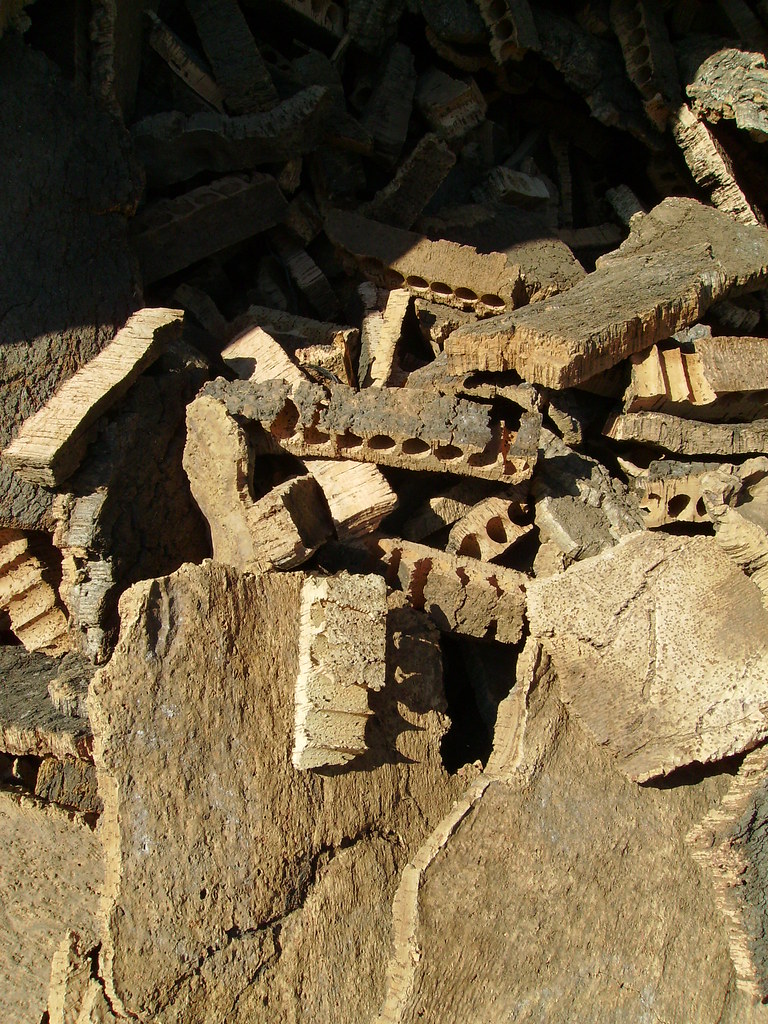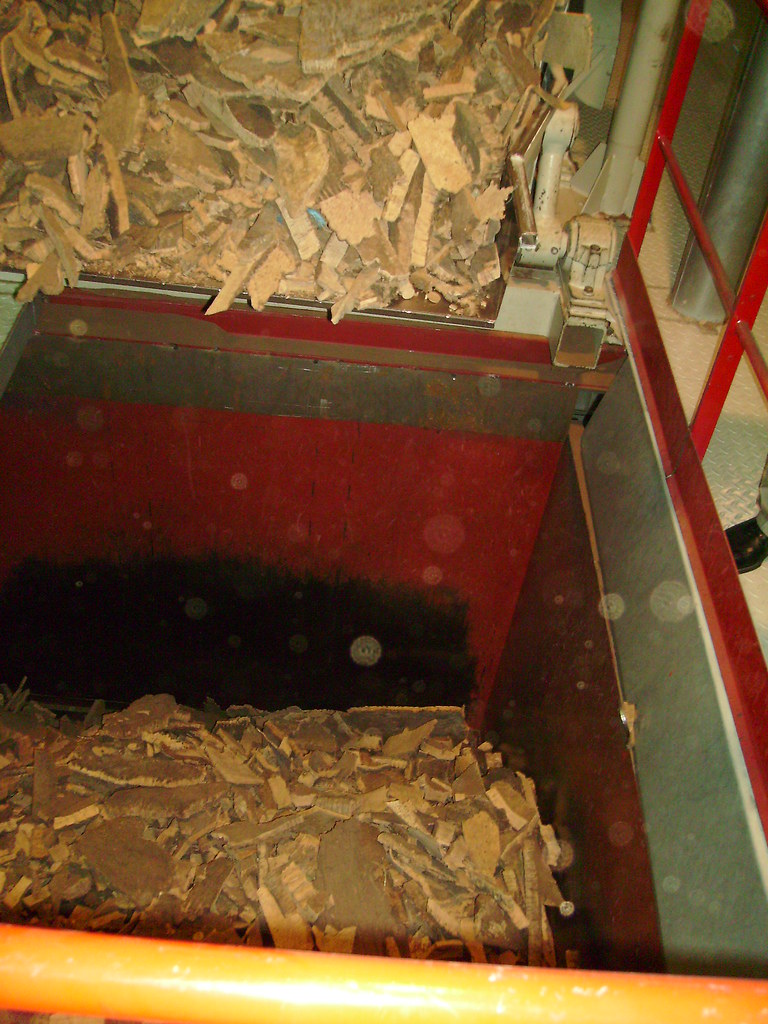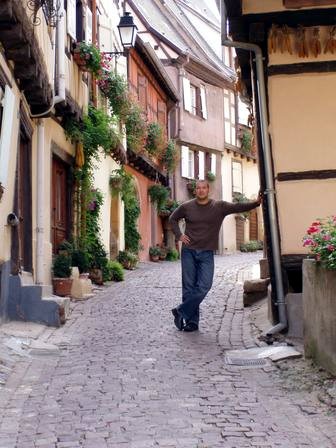To see the way that Oeno has been operating, in contrast to the older technology under which corks are being produced by the company leasing the remainder of the production space, we crossed over to the other side of the property. (I am trying to make it clear that although they operate on the same property, and though it is illustrative to see traditional cork production side by side with the high-technology used in the DIAM manufacture, there is no connection between the two other than a business arrangement to lease space.) Though Oeno is phasing out of natural cork closures at the moment, when they were producing them, they came at it from an entirely different direction - the soaking of the cork bark was done in gleaming, stainless steel - pressurized steam tables, and the condensed steam was filtered back via what looked like a reverse osmosis filtration system, so that the water was always free of cork tannin buildup and other unwanted contaminants.
For the DIAM closure, the cork sourcing is not so critical as for traditional corks - the part of the cork that they need is the suberin, the waxy, slightly spongy layer found under the bark of the cork oak tree, (Quercus suber.) We walked to the covered storage bays where cork that was destined to become DIAM was stored - it is made up largely of scraps that are too small to be useful for making traditional corks, remnants from planks that had been punched out into corks already. Dominic, the director of the company showed us a plank that had been punched. There were worm holes, tree bark, and other problems with the cork all around where the closure had been punched out, and one could extrapolate that there were problems in that closure itself as well, wherever it was now. "We find sometimes bugs, bullets, rocks, all sorts of things in the cork that are not desirable."
We put on our earplugs and entered the large warehouse where the initial processing takes place. Hoppers full of cork are dumped into a chipper, which breaks down the cork bark into small pieces of near uniform size. Heavy objects fall out at this point, and sure enough when we pulled the pan back to find what had come through, we found wire, a nail, bits of woody bark, small stones, and lots and lots of shotgun pellets - someone must be doing a lot of bird hunting in the cork forests!
From here, the cork is run through a series of centrifuges - this allows the engineers to select only the suberin portion of the cork oak - bits that are more or less dense are separated out and become waste, which will be used as fuel to provide energy to the plant. Of the total tonnage of cork that comes through the plant, less than 50% by weight is the suberin which is desirable for closure production - this is still much more efficient than traditional cork manufacture. As Dominic says, "there is actually much more cork in a DIAM than in a traditional cork!" by which I think he means that as a DIAM is more uniformly made from suberin, it contains much more of the desirable material than traditional corks, with their inclusions, voids, and uneven density. (And much fewer bugs, nails, stones, dirt, air, and bullets!)
Once the cork is sorted, it is sifted once more to ensure a uniform granule size - from here it can go forward to the next processes, designed to extract TCA and other unwanted volatiles from the cork.
(For those of you who may remember the Altec, this was the extent of the processing for that closure. It was assumed that the rigorous sorting would exclude TCA, which was believed to reside most commonly in the barky parts of the cork tree. Oeno does not have any further connection to Sabate or the Altec closure, except for having purchased the company and the patents, and Oeno has expanded their technology far beyond that of the earlier closure.)
Subscribe to:
Post Comments (Atom)






No comments:
Post a Comment